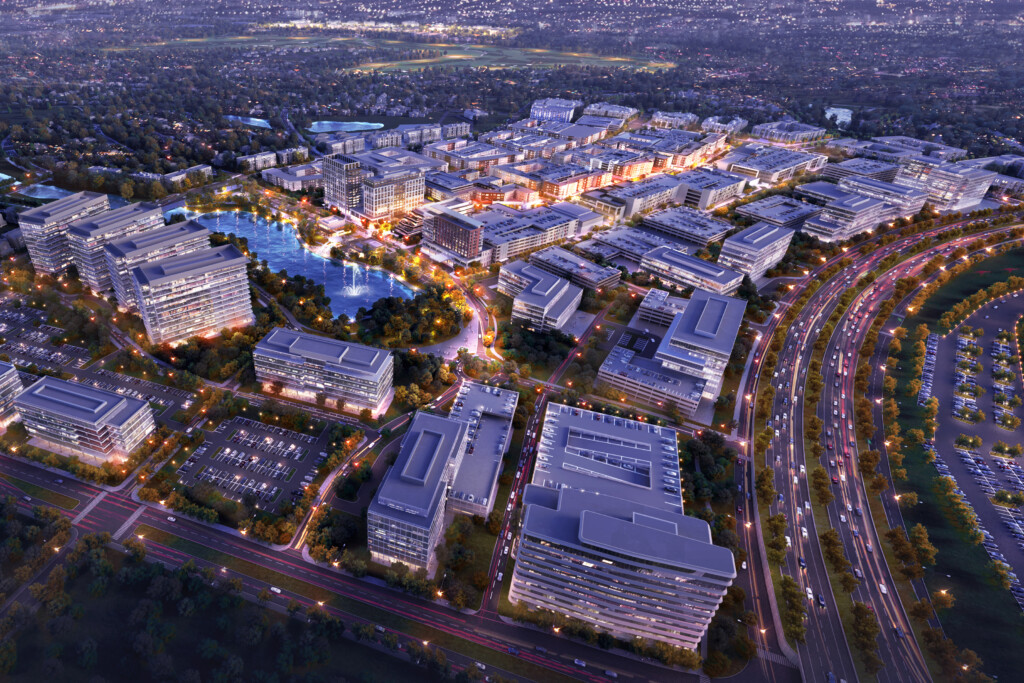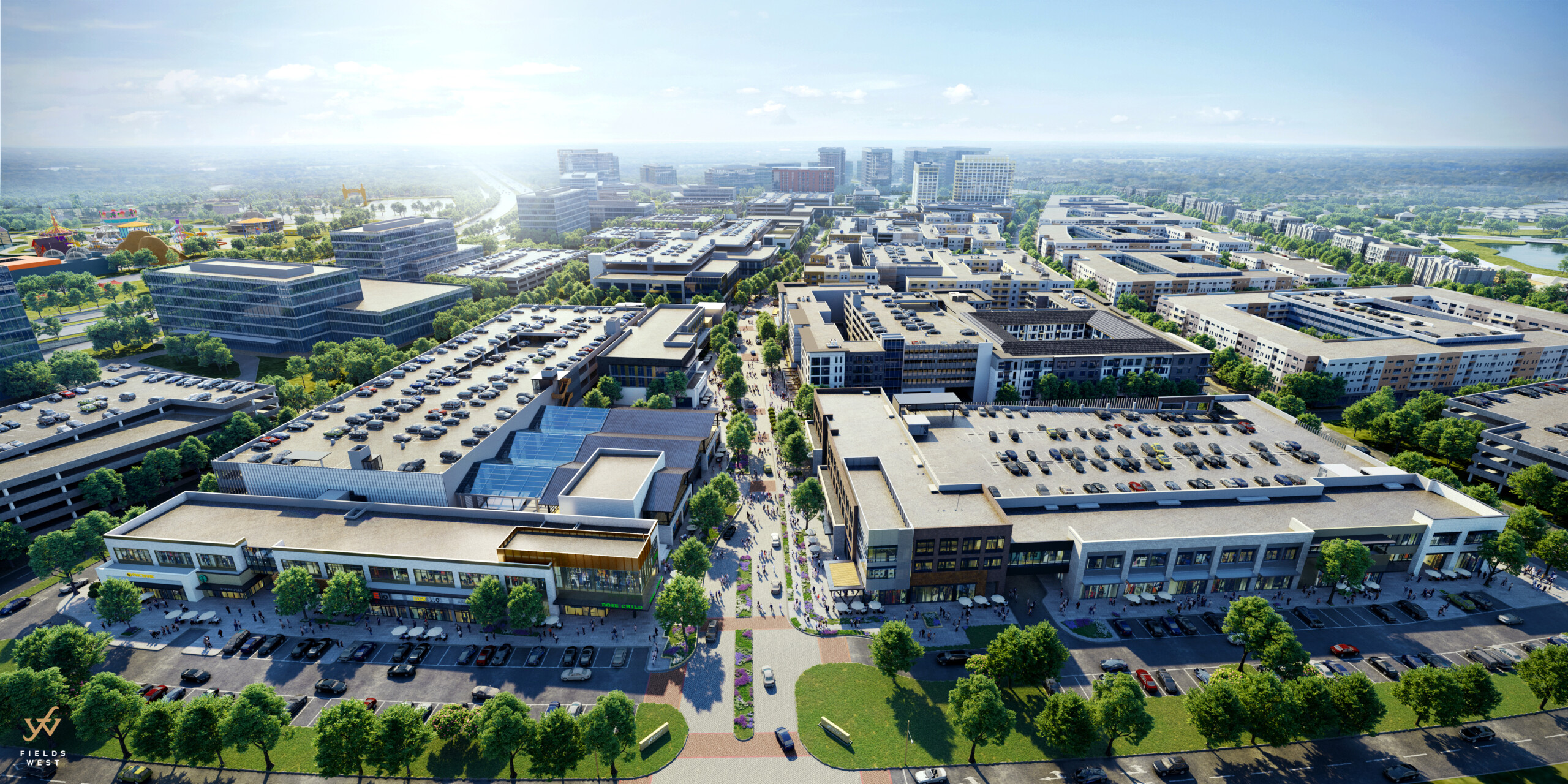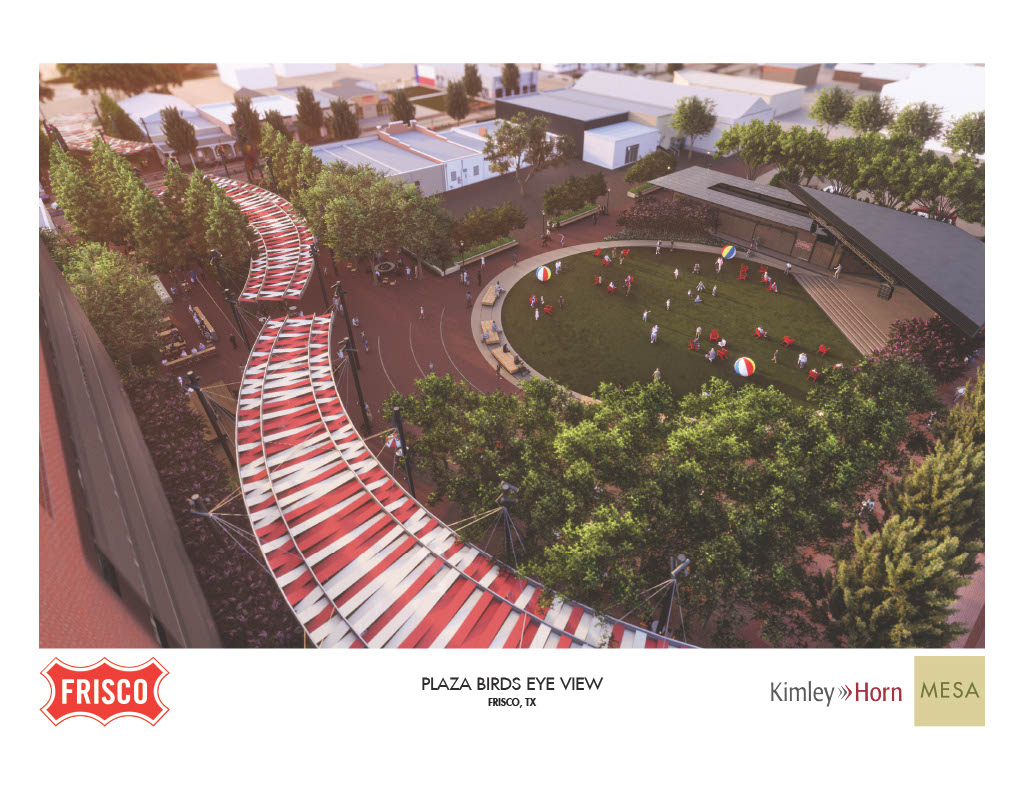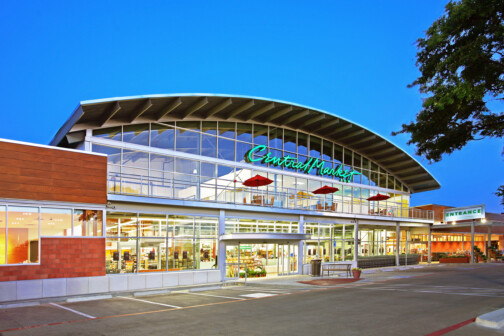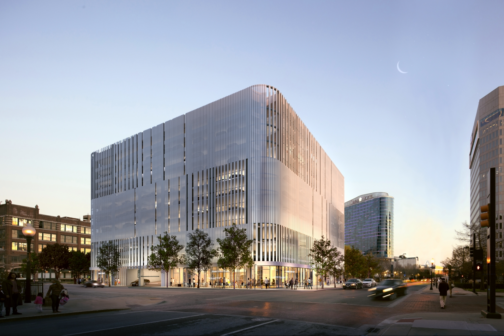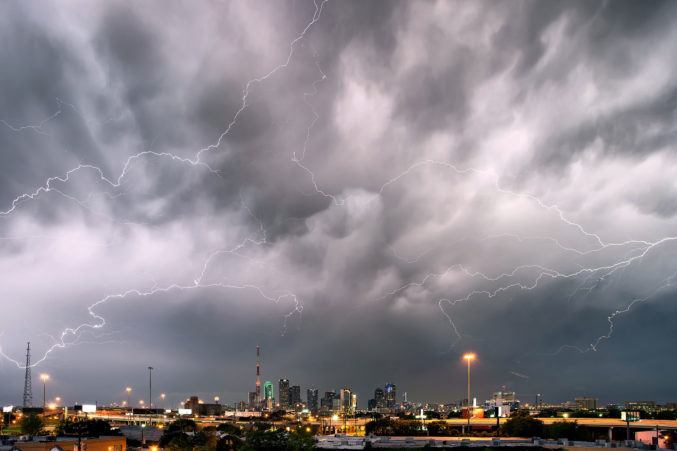In just over 20 years, Frisco’s population has ballooned by 540 percent. As of April, the 70-square-mile city’s population had surpassed 233,000 people, and numbers from the city’s economic development corporation estimated that there are about 2.2 million potential employees within 30 minutes of the city.
Between booming population growth and big wins like welcoming a kids-focused resort from Universal, a regional headquarters for McAfee, and landing the PGA of America headquarters, Frisco is keeping its name in the headlines. And it’s not done yet. Although Frisco is looking ahead to residential buildout in the next five to 10 years, its commercial buildout is likely 15 to 20 years down the road—that’s according to Jason Ford, the city’s economic development corporation president. For now, commercial development is burgeoning in the northern DFW city.
A 15-story tower hosting Fortune 500 financial services organization TIAA is set to open this year at The Star. The 162-acre HALL Park is in the midst of a $7 billion mixed-use redevelopment. The 242-acre mixed-use Firefly Park development is slated to bring in Class A office space, upscale retail, dining, entertainment, a Dream Hotel, townhomes, and a signature park.
And there is much more to come. A trio of projects featured at the Frisco Chamber of Commerce’s inaugural development summit on April 30 gave a preview to what the projects will bring to the table for employers—and for the talent.
“We’re starting to see corporate America wake up. It’s starting to come back,” said Bill Baumbgardner of VanTrust Real Estate. The assertion kicked off discussions around Frisco Station, a 242-acre master-planned development adjacent to the Dallas North Tollway that includes office, hospitality, and multifamily products. The development is a partnership between Hillwood, The Rudman Partnership and VanTrust Real Estate, which is serving as the office development partner.
“What we’ve done over the last year, year and a half, is really listen to what corporate America wants, and how they’re planning to get their people back in the office, and the environment that they want to see,” Baumbgardner said.
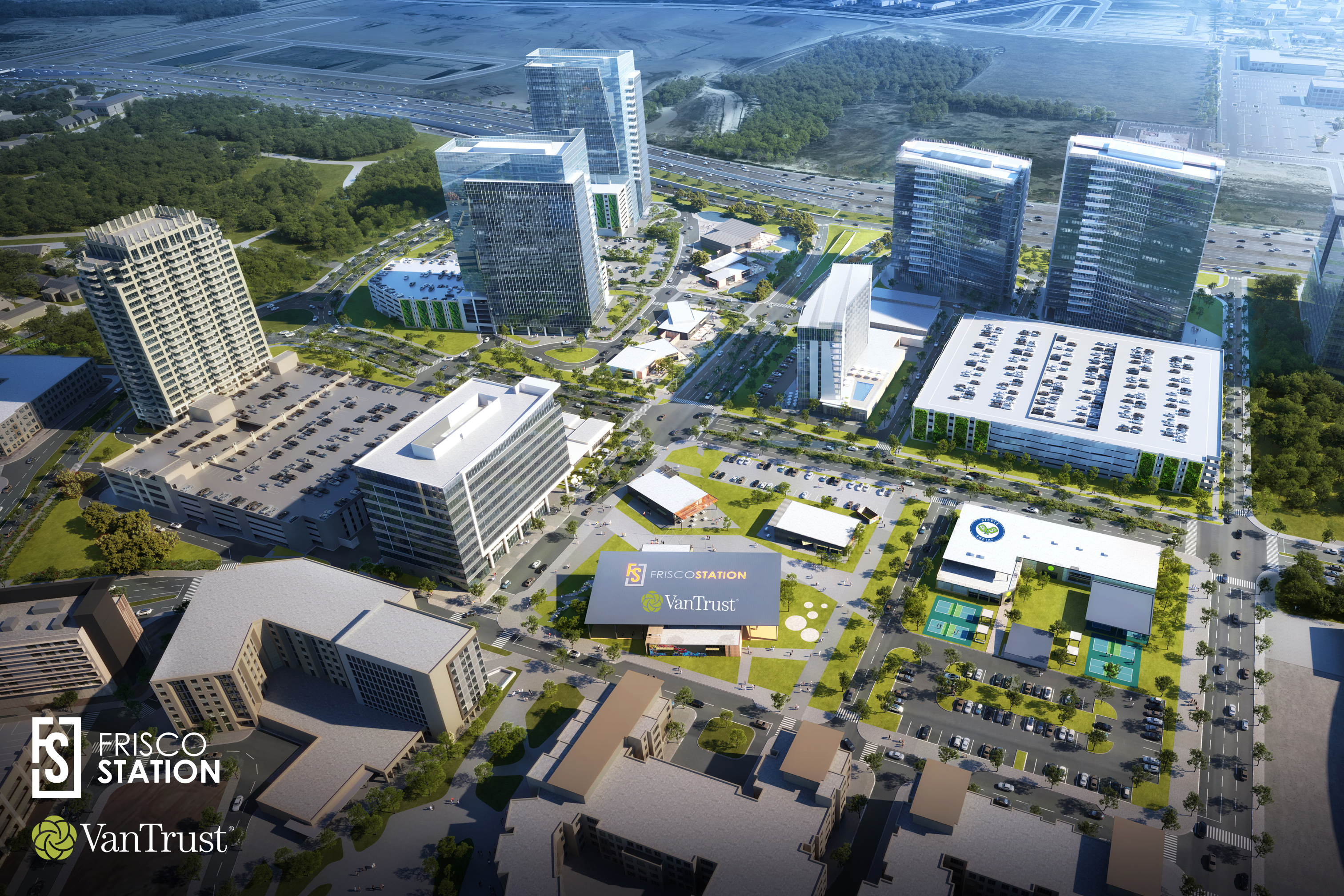
On the same day of the summit, Frisco Station formally announced the launch of a new 35-acre district, The Towers, featuring a Class AA speculative office building, an upscale hotel, a national retailer, and at least four fine dining options. Plans include up to five office buildings totaling 3 million square feet. The district has signed on Pickle and Social as Frisco Station’s first entertainment venue, which is in the pre-construction phase. Pickle and Social will be paired with Fairway Social, which is slated to include golf simulators with 130 golf courses.
“Corporate America says, ‘OK, I want an environment where my folks love to come to work,’” Baumbgardner said during the summit, later adding, “Corporations have to reimagine themselves in order to get the workers back into the office for a period of time, whether it’s hybrid or a full week. But they do want their people back.”
Other districts in Frisco Station’s master plan include The Campus, a 55-acre spot comprising office, hospitality, and civic uses; The Hub, with 30 acres of office, retail, restaurant, entertainment and hotel; a 27-acre district dubbed The Offices; 27 acres of urban living; 32 acres of parks and trails; and a 36-acre health and wellness district featuring medical, office, and urban living product.
Since 2015, the development has delivered a total of 700,000 square feet of premium Class A office space, four residential urban living communities and three hotel properties. “Their occupancy is fantastic, it’s over 80 percent,” Baumbgardner said of the hotels. “Their ADRs are doing really, really well.” Occupancy for the multifamily products is in the high 90s, he added.
“There’s a lot of national folks that want to be here,” Baumbgardner said. “They look at Frisco station as that area that’s a really strong stepping stone to being in Frisco.”
To the north, Hunt Realty Investments and The Karahan Companies are in the process of transforming what was raw ranch land into the multibillion-dollar Fields Development. The project comprises over 2,500 acres—or, it’s noted, 1,928 football fields—and will result in a multi-village endeavor touching on all elements of the real estate buffet, including industrial, multifamily, office, and retail.
The Brookside South neighborhood, which already has some occupants, will include roughly 500 homes ranging from 30-foot-wide townhomes to 70-foot-wide estates—prices will range from $750,000 to $2.5 million. Brookside North will feature 363 lots with sizes ranging from 55 feet to 84 feet and prices expected to start at $1.5 million.
The Preserve neighborhood will have custom homes from handpicked builders and will showcase the landscape’s topography by layering houses—lot sizes range from 7,500 square feet to over an acre, with prices ranging from $3.5 million to over $10 million.
The University Village area will be situated in proximity to UNT’s Frisco campus and is expected to accommodate students. In 2026, Universal Destinations & Experiences is planning to open a kids-focused theme park just off Dallas North Tollway. The Fields Development also includes the PGA of America headquarters, which began ushering in employees in 2022 and the Omni PGA Frisco Resort, which opened in 2023.
Tyler Kleinert of Hunt Realty Investments said the goal is to preserve the natural topography of the landscape through the years. Fields will also feature about 25 miles of hike and bike trail that connects to the city’s larger trail network. A nearby park is also on the horizon and will connect to the Fields trail system. “We just think it will be a huge amenity for all the residents and people who work there,” Kleinert said.
On the commercial side, Fields West will be Frisco’s answer to Legacy West and the Shops at Legacy, which were both developed by The Karahan Companies. The sister development will have learned from its siblings in Plano and will play into the natural features of Fields, Kleinert said. That means it will include a massive pond attached to a hike and bike trail as well as pocket parks. It’ll also be about 500 feet longer than Legacy West. Kleinert said announcements regarding Fields West are weeks away. “We’ve been actively leasing the retail for several years now,” he said. “And I’m very excited to announce the people that are coming. It’s a good mix of national tenants, notable names, familiar names, but then also some of the best retailers and restaurateurs in Dallas who want to get out to Frisco.”
Fields is pitching itself as a location that “attracts top talent and helps keep it.” Kleinert noted that while each of the “villages” within Fields will have their own personality, the development’s overall theme will emphasize walkability and an outdoor lifestyle. “You truly can walk to work, you can walk to restaurants, whatever it might be,” he said. “Everything is typically walkable within Fields.”
The city of Frisco is looking to redevelop its downtown area in an effort to activate Main Street. Plans are in the works for a downtown plaza that is expected to include a performance stage and food truck stops. The plaza is expected to be complete in April 2026, in time for the World Cup. In addition, the city recently wrapped up an RFQ process for an adjacent block of property owned by the city, chamber of commerce and economic development corporation.
The city’s downtown plan focuses on emphasizing pedestrian walkability over vehicles. It also focuses on building a sense of place—renderings show medians with railroad-themed decor and a “living room” sector of the plaza.
For John Lettelleir, the city’s development services director, the downtown plan also has ties to giving people a reason to come to work. “That’s what corporations are looking for, when they come to the office,” Lettelleir said. “There’s things to do not only in the office but around the office.”
Author



